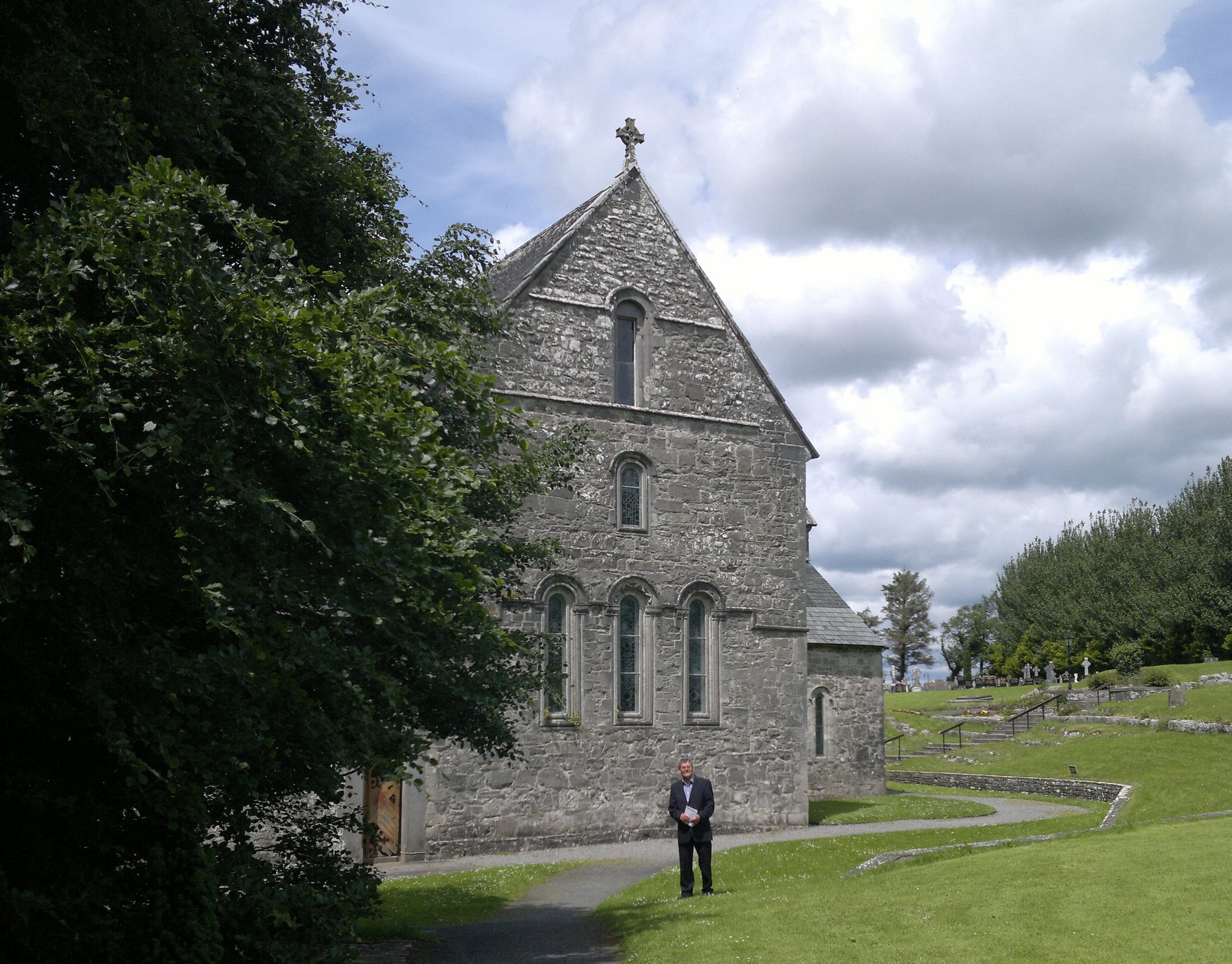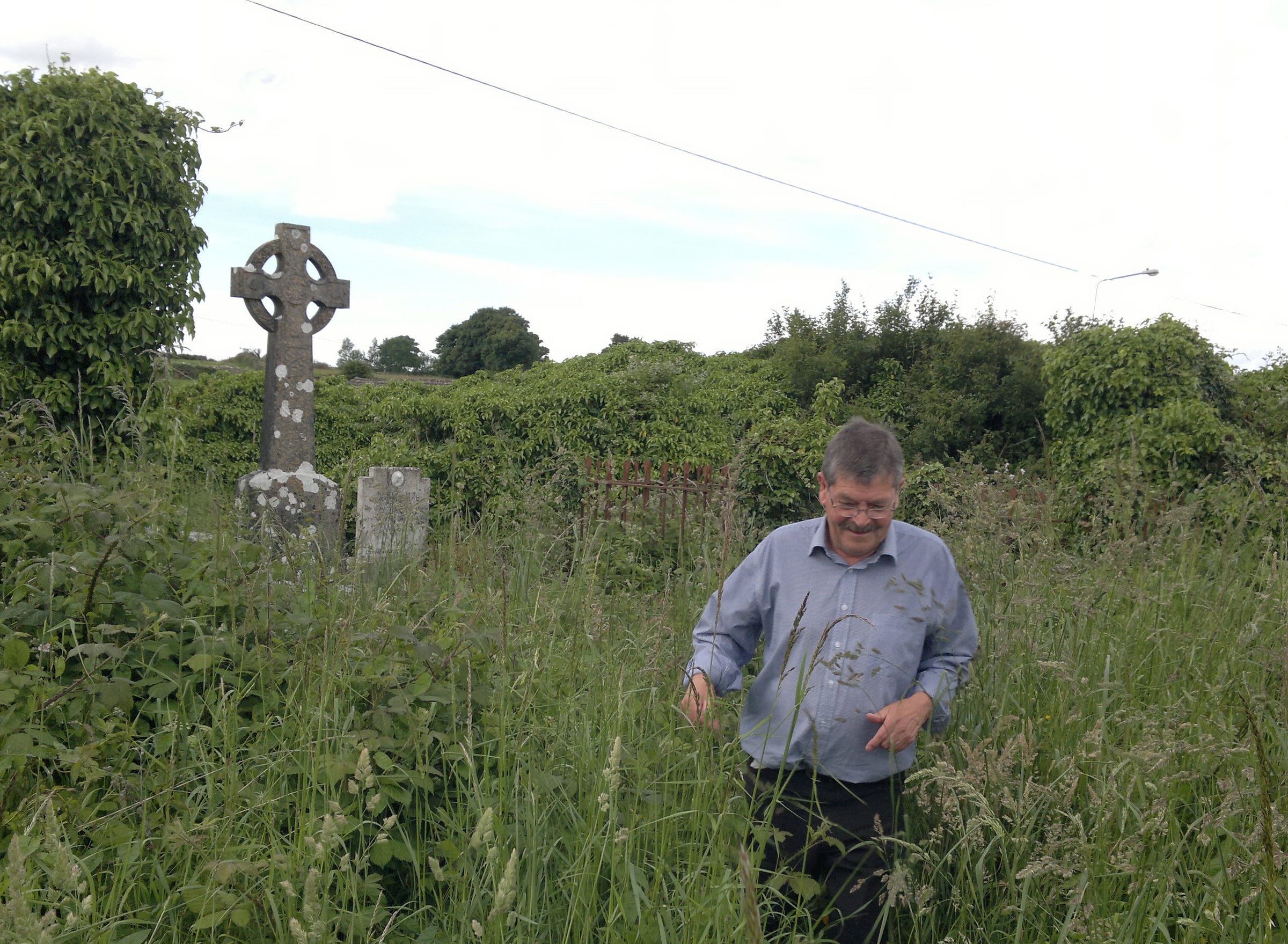Ireland
I was sitting beside my dad in front of a microfilm reader in Manchester’s Central Library when we first discovered our Irish ancestor William Kirby.
Our guest writer,
of joins us as part of our first cohort in the Projectkin Members’ Corner. Monthly posts from members celebrate their contributions to family history storytelling — in all its forms. Posts may be written or recorded (audio or video) will be shared for free each month. Explore the entire Members’ Corner here.
I was sitting beside my dad in front of a microfilm reader in Manchester’s Central Library when we first discovered our Irish ancestor William Kirby. One word leaped out from the dimly-lit screen beside his name that seared itself into my young mind. Ireland.
Riding home on the upper deck of the bus on that rainy afternoon in 1988, we couldn’t help but keep looking at our printout of the 1871 census page we had found.
For a young lad who had rarely been outside of the city, my own story now suddenly seemed richer and even a little exotic.
William Kirby, my three-times great-grandfather, had arrived in Manchester in around 1864 and it was thanks to him that we were living in the same place he had made his home.
He was just one of the tens of thousands of men and women from Ireland who helped build what became the world’s first modern city.
Little did we know that short bus ride home was to be the start of a long journey to piece together the story of an ancestor we could never hope to meet.
I pictured a man with black hair like my dad – Kirby sounds solidly English but in Ireland has roots in O’ Ciarmhaic and means “dark son” in Gaelic.
But where did he come from in Ireland? Was his life there spent in the mountains, on the coast or in fields? Would we ever find out?
No clues came from the old family Bible, which we came across quite by chance after an elderly relative died and it was recovered from an attic.
With its brown leather cover falling apart, the family page inside had no names – only the word “dead” written over and over again in a scrawly hand.
But as we searched for further clues about William’s life, we slowly started to put together the jigsaw puzzle as though finding the lost pieces under the table, beneath cupboards and behind bookcases.
The biggest discovery so far was the parish record for William’s marriage to my three-times great-grandmother Ellen Muirhead at St Chad’s Catholic Church in Manchester in 1866.
In a detail not shown on the wedding certificate which we had ordered a few years earlier, the parish priest had carefully written the name of William’s former home in Ireland, Mayo, in pencil in the margin.
The county in the Irish province of Connaught, which takes its name from Mhaigh Eo, the ‘plain of the yew trees’, looks out from Ireland’s windswept west coast to America.
Finally, in 2011, the two of us made our own journey back across the Irish Sea.
In Mayo, we looked for answers in overgrown cemeteries, down country lanes and on a remote drive along the Atlantic coast on a failed mission to find a mystery woman we were told had the “old Kirby wedding shoe”.
The priest at the ancient Ballintubber Abbey, where we went to Sunday Mass, told us he had heard the Kirbys had been expert stonemasons.
But our search for William’s townland, the patchwork of fields he once called home, eluded us.
All we knew was that our relative had somehow survived the Great Famine as a boy before travelling to Manchester, where he married Ellen and set up home in the city’s cheapest accommodation – an underground cellar.
And it was only by returning to Manchester, where we widened the net to trace each of William’s Irish-Mancunian relatives and friends, that we finally got somewhere.
A niece, it turned out, had been baptised at Ballintubber Abbey, where unknowingly we had gone to Mass.
The godfather to one of William’s children was from the hamlet of Skehanagh next to the abbey – the “place of the whitethorn” – a narrow lane with a few houses that we learned was decimated by the potato famine in the black year of 1847.
We didn’t have to travel to Ireland to get closer to understanding William, we finally realised. His story was right here in Manchester where we had been searching all these years.
We began to trace William’s route around Manchester as he moved from one dwelling to the next – ending up in one of the worst slums in the Victorian city.
It was called Angel Meadow and, at the time when Manchester was the powerhouse of the industrial revolution, he was fighting to survive there while struggling to make ends meet.
His appalling living conditions in a district described by the social philosopher Friedrich Engels as “Hell upon Earth” were so hard that two of his children failed to reach adulthood, while Ellen was taken by tuberculosis.
Using maps and rent books, we managed to work out that the house – a one-up-one-down dwelling with two rooms of 10ft square – was beneath a car park we often used.
Few people know that in the centre of Manchester, which is largely flat, the foundations of old houses that were demolished in slum clearances in the 1960s are often still there – after they were backfilled and buried beneath a thin crust of concrete like Egyptian tombs.
There they lie, silent and untouched, as a new city of steel and glass skyscrapers is being built around them.
One night on my way to a music gig at the Arena with my wife, I found the car park locked with a remarkable sign fastened to the fence: Archaeologists at Work.
In the morning, I went and spoke to them – telling them what must have seemed a strange story about my Irish ancestor’s home.
They invited me to return with my dad when the dig was completed and together we clambered down a ladder into the holes like time travellers.
After decades of trying to trace our Irish forefather, we were able to walk through his front door.
Together we stood there, on the cracked flagstones with cars passing on the street above our heads, and reached out and touched the still-sooty bricks of William’s fireplace. It was a moment the two of us will never forget.
Something struck me as we stood in the ground that we could never have learned from the archives or our trip to Ireland.
The walls separating William’s house from next door were made from a single skin of roughly mortared bricks laid end to end. Every noise and the heat from the fire would have radiated straight through those paper-thin wall.
Heartbreakingly, William’s fifth child died from convulsions brought on by a fever in that house in 1877. He was just two weeks old.
The archaeologists discovered the privy in a back alley that William would have shared with a hundred other people. Their finds included metal hinges, door frames and, astonishingly, a key.
They gave me a brick, still covered in soot, from his fireplace which is now in my own home.
It was a moment at the end of a long road that led me to go on to write a book about Angel Meadow and to complete a PhD on the nineteenth century living conditions in the district.
William died on 4 December 1902 from bronchitis and exhaustion at Crumpsall Workhouse in Manchester.
We have our own way of finding him among the grey rows of Victorian paupers’ graves in St Joseph’s Catholic Cemetery just a few miles to the east.
Passing in front of the Campo Santo, we line up the two statues of the Sacred Heart of Jesus and follow their gaze.
They look towards a gap in the trees where a grass track opens up beneath the high canopy of branches and leaves.
Down that path, a chalkware plaque of the Mother and Child nailed to an old beech tree serves as our marker.
We turn to the right and look along a short row of headstones to find him – buried with ten strangers.
Standing there with my dad last summer, dappled sunlight shining on William’s headstone, I thought about the family history journey we had been on together since that rainy day on the bus in 1988.
It’s because of him that we live and breathe in this city we are proud to call home – one of the thousands of Irish surnames etched on the paupers’ headstones in a Manchester cemetery.
Dr Dean Kirby is a journalist, author and family historian who specialises in researching the stories of Manchester ancestors. An associate of the UK’s professional genealogy body AGRA, he runs the family history service www.manchesterfamilyhistory.com. He also writes the Manchester history newsletter www.manchesterhistory.uk.
Do you think you might be interested in joining us here in the Members’ Corner with a piece of your own? We’d love to share your work. Learn more:













Ireland. It calls our names, those of us with even a toehold in our ancestry to those green hills. My 2nd gr.grandparents hailed from Roscrea Parish, Kings county (now Offaly) and Ballymena, Antrim. Both were emigrants fleeing the results of the Great Hunger. If you haven't read it, there is a wonderful book "Voyage of Mercy" by Stephen Puleo who details with great accuracy about those who left by boat and those who left life. It can really put you in the time and place and give you so much understanding of what their lives were like. I was so thrilled you were able to visit the cellar home of your 3rd-greats. I have enough Irish in me to believe they knew you were there.
So happy you reposted this - what an inspiring piece of research. And how incredible to be able to see these homes! My own immigrant ancestors’ dwellings have long been destroyed by urban renewal.